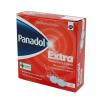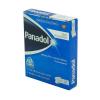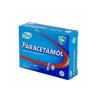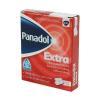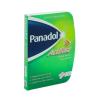Cluster Headache
What is it?
- A cluster headache is one of the most painful types of headache. A striking feature of cluster headache is that the attacks occur in cyclical patterns, or clusters — which gives the condition its name.
- Bouts of frequent attacks — known as cluster periods — may last from weeks to months, usually followed by remission periods when the headache attacks stop completely. The pattern varies from one person to another, but most people have one or two cluster periods a year. During remission, no headaches occur for months, and sometimes even years.
- Fortunately, cluster headache is rare and not life-threatening. Treatments can help make the attacks shorter and less severe. In addition, preventive medications can help reduce the number of headaches.
Symptoms
A cluster headache strikes quickly, usually without warning. Typical signs and symptoms include:
- Excruciating pain, generally located in or around the eye, but may radiate to other areas of the face, head, neck and shoulders
- One-sided pain
- Restlessness
- Excessive tearing
- Redness in the eye of the affected side
- Stuffy or runny nasal passage in the nostril on the affected side of your face
- Sweaty, pale skin (pallor) on the face
- Swelling around the eye on the affected side of your face
- Reduced pupil size
- Drooping eyelid
The pain of a cluster headache is often described as sharp, penetrating or burning. People with this condition say that the pain feels like a hot poker being stuck in the eye or that the eye is being pushed out of its socket. People with cluster headache appear restless, preferring to pace or sit and rock back and forth to soothe the attack. In contrast to people with migraine, people with cluster headache usually avoid lying down during an attack because this position seems to increase the pain.
Some migraine-like symptoms, including nausea, sensitivity to light and sound, and aura, may occur with a cluster headache.
Cluster period characteristics
A cluster period generally lasts from one to 12 weeks. The starting date and the duration of each cluster period may be consistent from period to period. For example, cluster periods occur seasonally, such as every spring or every fall.
Most people have episodic cluster headaches, which means the cluster headaches occur for one week to a year, followed by a pain-free remission period that may last as long as six to 12 months before another cluster headache develops. Chronic cluster periods may continue for more than a year, or pain-free periods may last less than one month.
During a cluster period:
- Headaches typically occur every day, sometimes several times a day.
- A single attack may last from 15 minutes to three hours.
- The attacks happen often at the same time within each 24-hour day.
- The majority of attacks occur between 9 p.m. and 9 a.m.
The pain usually ends as suddenly as it begins, with rapidly decreasing intensity. After attacks, most people are completely free from pain but exhausted.
Causes
The exact cause of cluster headaches is unknown, but abnormalities in the hypothalamus likely play a role. Cluster attacks typically occur with clocklike regularity during a 24-hour day, and the cycle of cluster periods often follows the seasons of the year. These patterns suggest that the body's biological clock is involved. In humans, the biological clock is located in the hypothalamus, which lies deep in the center of your brain. Abnormalities of the hypothalamus may explain the timing and cyclical nature of cluster headache. Studies have detected increased activity in the hypothalamus during the course of a cluster headache.
Other factors that may be involved in the development of cluster headaches include:
- Hormones. People who have cluster headaches have abnormal levels of certain hormones, such as melatonin and cortisol, during cluster periods.
- Neurotransmitters. Changes in the levels of some of the chemicals that carry impulses in the brain (neurotransmitters), such as serotonin, may play a role in the development of cluster headaches.
Unlike migraine and tension headache, cluster headache generally isn't associated with triggers such as foods, hormonal changes or stress. But once a cluster period begins, consumption of any alcohol can quickly trigger a splitting headache. For this reason, many people with cluster headache avoid alcohol for the duration of a cluster period. Other possible triggers include the use of medications such as nitroglycerin, a drug used to treat heart disease.
Risk factors
Risk factors for cluster headaches include:
- Being a man. Men are more likely than are women to have cluster headaches.
- Being an adult. Most people with cluster headaches first develop the disorder in their late 20s, although the condition can develop at any age.
- Being black. Blacks are more likely than whites to experience cluster headaches.
- Smoking. Many people who get cluster headache attacks are smokers.
- Drinking alcohol. Alcohol can trigger an attack if you're at risk of cluster headache.
- A family history. If a parent or sibling has ever had a cluster headache, you may have an increased risk of cluster headaches.
Diagnosis
Cluster headache has a characteristic type of pain and pattern of attacks. A diagnosis depends on your description of the attacks, including your pain, the location and severity of your headaches, and associated symptoms. The frequency and duration of your headaches also are important factors.
If you have chronic or recurrent headaches, your doctor may try to pinpoint the type and cause of your headache using certain approaches.
Examinations and tests
- Neurological examination. A neurological examination may help your doctor detect physical signs of a cluster headache. Sometimes the pupil of your eye may appear smaller, or your eyelid may droop, even between attacks.
- Imaging tests. If you have unusual or complicated headaches or an abnormal neurological exam, you may undergo other diagnostic testing to rule out other serious causes of head pain, such as a tumor or aneurysm. Two common brain-imaging tests are computerized tomography (CT) and magnetic resonance imaging (MRI) scans. A CT scan uses a series of computer-directed X-rays to provide a comprehensive view of your brain. An MRI doesn't use X-rays. Instead, it combines magnetism, radio waves and computer technology to produce clear images of your brain.
Headache tracking
One of the most helpful things you can do is keep a headache journal for at least two months. Each time you get a headache, jot down the following information:
- A description of the pain
- The severity of the pain
- The location of the pain
- The duration of the pain
- Any medications you're taking
- The time
- What you were doing
- What you were eating or drinking
A headache journal can offer valuable clues that may help your doctor diagnose your particular kind of headache and discover possible headache triggers.
Treatments and drugs
There's no cure for cluster headaches. The goal of treatment is to help decrease the severity of pain and shorten the headache period.
Because the pain of a cluster headache comes on suddenly and may subside within a short time, over-the-counter pain relievers such as aspirin or ibuprofen (Advil, Motrin, others) aren't effective. The headache is usually gone before the drug starts working. Fortunately, other types of acute medication can provide some pain relief. Treatment of cluster headache is focused more on prevention, with more medication options available to choose from.
Acute treatments
Fast-acting treatments available from your doctor include:
- Oxygen. Briefly inhaling 100 percent oxygen through a mask at a rate of 7 to 10 liters a minute provides dramatic relief for most who use it. The effects of this safe, inexpensive procedure can be felt within 15 minutes. The major drawback of oxygen is the need to carry an oxygen cylinder and regulator with you, which can make the treatment inconvenient and inaccessible at times. Small, portable units are available, but some people still find them impractical. Sometimes, oxygen may only delay rather than stop the attack, and pain may return.
- Triptans. The injectable form of sumatriptan, which is commonly used to treat migraine, also is an effective acute treatment for cluster headache. Some people may benefit from using sumatriptan in nasal spray form, but for most people this isn't as effective as an injection. Sumatriptan isn't recommended if you have uncontrolled high blood pressure or ischemic heart disease. Another triptan medication, zolmitriptan (Zomig), can be taken in nasal spray form for relief of cluster headache. This medication may be an option if you can't tolerate other forms of fast-acting treatments.
- Dihydroergotamine. This medication derivative is available in intravenous, injectable and inhaler forms. Dihydroergotamine is an effective pain reliever for some people with cluster headache. When administered intravenously, the drug requires you to go to a hospital or doctor's office to have an intravenous (IV) line placed in a vein. The inhaler form of the drug works more slowly.
- Octreotide (Sandostatin, Sandostatin LAR). This drug, an injectable synthetic version of the brain hormone somatostatin, is an effective treatment for cluster headache and is safe if you have high blood pressure and ischemic heart disease.
- Local anesthetics. The numbing effect of local anesthetics, such as lidocaine (Xylocaine), may be effective against cluster headache pain when used in the form of nasal drops.
Surgery
Rarely, surgery is recommended for people with chronic cluster headache who don't respond well to aggressive treatment or who can't tolerate the medications or their side effects. Candidates for surgery must have headaches only on one side of the head because the surgery can be performed only once.
Several types of surgery have been used to treat cluster headache. These procedures attempt to damage the nerve pathways thought to be responsible for pain. However, residual muscle weakness in your jaw or sensory loss in certain areas of your face and head may result. Surgical options include:
- Conventional surgery. Using a conventional invasive procedure, your surgeon cuts part of the trigeminal nerve — the nerve that serves the area behind and around your eye — with a scalpel or uses small burns to destroy part of the nerve. This form of surgery can provide relief, but has serious risks to the eye. This is no longer a procedure of first choice.
- Glycerol injection. An injection of glycerol into the facial nerves can provide immediate relief of symptoms with less risk than other surgical procedures.
Newer treatments
As scientists learn more about the causes of cluster headache, they're able to develop more-selective treatments for the condition. One development that shows promise is the use of a device to stimulate the occipital nerve, which influences the trigeminal nerve. To treat people with frequent cluster headaches, researchers are testing a stimulator — a pacemaker-sized device that sends impulses via electrodes — that is implanted over the occipital nerve. Several small studies, including one by Mayo Clinic researchers, of implanted occipital nerve stimulators found that the devices reduced chronic headache pain in some people, and the devices were well tolerated and appeared to be very safe.
Similar research is under way using an implanted stimulator in the hypothalamus, the area of the brain associated with the timing of cluster periods. Deep brain stimulation of the hypothalamus may provide relief for people with severe, chronic cluster headaches.
Preventive medicine
Whenever a cluster period starts, you'll likely start taking a long-term medication, often accompanied by a short-term medication. After your headaches are under control, you'll likely discontinue use of the short-term medication but continue with the long-term drug.
Short-term medications can help prevent headache attacks during the period of time it takes for one of the long-term drugs to become effective.
- Corticosteroids. Inflammation-suppressing drugs called corticosteroids, such as prednisone, are fast-acting preventive medications. They belong to a general family of medicines called steroids. Your doctor may prescribe corticosteroids if your cluster headache condition has only recently started or if you have a pattern of brief cluster periods and long remissions. Although corticosteroids are an excellent short-term option, serious side effects make them inappropriate for long-term use.
- Ergotamine. Ergotamine, available as a tablet that you place under your tongue or available as a rectal suppository, can be taken before bed to prevent nighttime attacks. Ergot medications are effective, but can't be combined with triptans.
- Nerve block. Injecting a numbing agent (anesthetic) and corticosteroid into the area around the occipital nerve, located at the back of your head, can prevent pain messages from traveling along that nerve pathway. The occipital nerve converges with the trigeminal nerve, which connects to all the pain-sensitive structures in your skull. An occipital nerve block can be useful for temporary relief until long-term preventive medications take effect.
Long-term medications are taken during the entire cluster period. Some people with chronic cluster headache may need to take two or more long-term medications simultaneously.
- Calcium channel blockers. The calcium channel blocking agent verapamil (Calan, Verelan, others) is often the first choice for preventing cluster headache. Sometime after your cluster period ends, the use of this medication is gradually tapered and discontinued under your doctor's direction. Occasionally, longer term use is needed to manage chronic cluster headache. Constipation is a common side effect of this medication, as well as dizziness, nausea, fatigue, swelling of the ankles and low blood pressure.
- Lithium carbonate. Lithium, which is used to treat bipolar disorder, is also effective in preventing chronic cluster headache. Side effects include tremor, increased urination and diarrhea. Your doctor can adjust the dosage to minimize side effects. While you're taking this medication, your blood will be drawn at regular intervals to check for the development of more serious side effects, such as kidney damage.
Other preventive medications used for cluster headache include anti-seizure medications such as divalproex (Depakote) and topiramate (Topamax).
Lifestyle remedies
The following measures may help you avoid a cluster attack during a cluster cycle:
- Stick to a regular sleep schedule. Cluster periods may begin when there are changes in your normal sleep schedule. During a cluster period, follow your usual sleep routine.
- Avoid alcohol. Alcohol consumption, including beer and wine, almost always triggers a headache during a cluster period. This can happen quickly, even before you finish your first drink.
- Limit exposure to volatile substances. Prolonged exposure to substances such as solvents, gasoline and oil-based paints may trigger an attack.
- Be cautious in high altitudes. During a cluster period, the reduced oxygen at high altitudes may trigger a headache.
- Avoid tobacco products. Nicotine may trigger a headache during a cluster period. If you're prone to cluster headache, it's best to stop smoking and avoid other tobacco products.
- Avoid nitrates. During a cluster period, nitrates may trigger a headaches for some people. Foods that contain nitrates include smoked and processed meats. Certain medications, such as nitroglycerin, also may contain nitrates.
Alternative medicine
Because cluster headaches can be so painful, you may be tempted to try alternative or complementary therapies to relieve your pain. However, a recent survey of people with cluster headache who tried a number of alternative therapies — including acupuncture, acupressure, therapeutic touch, chiropractic and homeopathy — found that fewer than 10 percent found these therapies effective.
Since they're readily available over-the-counter, some people have turned to dietary supplements to try to ease the pain of cluster headaches. One such supplement is melatonin, which has been found to be present in decreased levels in people with cluster headache. But, melatonin therapy hasn't been proved to be an effective way to ward off these painful headaches. Be sure to check with your doctor before trying any type of supplement because they may interact with your prescribed medications.
Coping and support
Living with cluster headache can be very difficult. Cluster headaches can be frightening to you and to your family and friends. The debilitating attacks may seem unbearable. In addition to the physical symptoms, the chronic pain that often accompanies cluster headache attacks can make you anxious or depressed. Ultimately, it may affect your interaction with friends and family, your productivity at work, and the overall quality of your life.
Talking to a counselor or therapist can help you cope with the effects of cluster headache. Or you may find encouragement and understanding in a headache support group. Although support groups aren't for everyone, they can be good sources of information. Group members often know about the latest treatments and tend to share their own experiences. If you're interested, your doctor may be able to recommend a group in your area.
Prevention
Because the cause of cluster headache is unknown, you can't prevent a first occurrence. However, a preventive strategy is crucial for managing cluster headache because trying to treat it with only acute drugs can seem hopeless. Prevention can help reduce the frequency and severity of the attacks and the risk of rebound headaches. Preventive medications can also increase the effectiveness of acute medications.
In addition, you may help reduce your risk of future attacks by avoiding alcohol and nicotine, which often precipitate cluster headaches.
References:
https://en.wikipedia.org/wiki/Cluster_headache
https://www.migrainetrust.org/about-migraine/types-of-migraine/other-headache-disorders/cluster-headache/
http://www.medicinenet.com/cluster_headaches/article.htm
http://www.emedicinehealth.com/cluster_headache/article_em.htm
http://emedicine.medscape.com/article/1142459-overview







